When I kicked off my research by taking a trip to the local library, I anticipated slim pickings in terms of resource information. I didn’t expect to find what I needed. What I found not only jump started my project, it catapulted me head first into anime nation. Far be from me to have expected that my librarian was an anime aficionado.
When I approached the first librarian for assistance, I was greeted as if I were asking for directions to the moon. After digesting some of what I said, the librarian raised an eyebrow and pointed at another librarian (Sergio) quipping, “He’s really into that stuff.”
Thus my anime journey commenced, thanks to Sergio and my local library surprisingly brimming with anime videos and manga. Though I arrived at the library empty handed and empty headed, Sergio made sure I got my feet wet by selecting several anime videos and manga (anime in comic form) to take home with me. He was also gracious enough to grant me an interview to boot.
I decided to apply the reflective dyadic approach to interviewing as described in Gubrium’s, “Postmodern Interviewing” to benefit from the natural flow and reflection this interview style offers.
I learned that Sergio J. A. Ragno III is a Systems Librarian and cartoonist http://thirteenthchild.net. Sergio has a unique understanding of anime that stems from his desire to discover new mediums that will foster his abilities as a professional artist.
Despite having been exposed to some anime in the 80’s and 90’s, Sergio’s main introduction to anime was the result of Cartoon Network’s Toonami block of late night programming. He shared with me that he became a fan of Trigun and Cowboy Bebop, both of which were aired during Cartoon Network’s Adult Swim programming.
For more than a decade, Sergio has remained a fan of Trigun, but attributes his self-discovery to Cowboy Bebop. It is with Cowboy that Sergio discovered the uniqueness and sophistication of anime in contrast to Western cartoons. According to Sergio, “…Cowboy Bebop was where I found myself … believing in the medium for lack of better words. It had a different pace than Western cartoons, and had sophisticated themes and characters it could explore in a subtle way. Trigun had this too, but Bebop was far more accessible because it was brimming with Western themes and concepts. Anime has a lot more flexibility in the tone of the themes it can explore mainly because it doesn’t have the same “for children” stigma animation does in the states. Sure, we have mature cartoons in the states now, but they were and are more or less dependent on intent of the network it belongs to like Adult Swim, SciFi, Spike or MTV a while ago. An anime can choose to be serious of its own accord.”
I was taken back when I asked Sergio if he considered himself an otaku (an anime expert and devotee). Based on the amount of information he had in mental storage, he was an otaku if there ever was one. But his explanation made perfect sense, “…because I do not attribute a love for anime as an element of my identity, and I believe that is what makes an Otaku an Otaku. My primary interest in anime comes from my career as an artist, so it’s kind of an ulterior motive and less of a genuine devotion I suppose you can say.
Some of the first resource information Sergio selected for me aside from anime videos, was manga. When you page through this material, you’re hard pressed not to be captivated by the art work and intelligence of the story lines. Not unlike adapting books to cinema, manga is adapted to anime. So I was curious if Sergio preferred reading the manga as opposed to watching the anime. I for one respect the manga, but love the anime. And it has nothing to do with the fact that when you read manga, your reading in the tradition of Japanese culture which is right to left. Sergio conveyed that anime allows for use of cinematic techniques that add dimensions to the original manga that cannot be duplicated by just reading the story. I couldn’t agree more.
The popularity of anime is not limited to videos and film. Anime has made a mark in the video game industry. Sergio pointed out games such as Pokemon and Zelda have been influenced by common anime adaptations. Unfortunately, he has a poor opinion of the video games adapted from anime in that most horribly fail to replicate watching the original anime.
I concluded my interview of Sergio as it began, thankful for his selflessness to share his knowledge of anime with me and appreciative of his willingness to help me to see the statute in the stone.
Below is a transcript of the entire interview.
Online interview with Sergio Ragno
Q: How did you get interested in Japanese Anime?
SR: I am a cartoonist, so I have an interest in exploring many genres of my medium in order to expand my talents by learning new techniques. This is what first piqued my interest in anime. When I was young, in the late 80s, early 90s, anime was coming to the states in a very slow trickle. Ultra violence and other less family friendly themes was the flavor of that decade so I didn’t see much, just mentions of anime here and there like in the back of gaming magazines. My first real introduction to anime came from Cartoon Network’s Toonami block, which was among the first mainstream homes to anime in the states, so for many Americans my age this was the only place we could watch anime. The first show I became very invested in was Trigun, followed by Cowboy Beebop, both of which were on Cartoon Network’s late night Adult Swim block of programming.
Q: Do you consider yourself an otaku?
SR: I don’t really, but only because I do not attribute a love for anime as an element of my identity, and I believe that is what makes an Otaku an Otaku. My primary interest in anime comes from my career as an artist, so it’s kind of an ulterior motive and less of a genuine devotion I suppose you can say.
Q: How long have you been a fan of anime?
SR: A little over a decade now. Trigun was interesting, but Cowboy Beebop was where I found myself … believing in the medium for lack of better words. It had a different pace than Western cartoons, and had sophisticated themes and characters it could explore in a subtle way. Trigun had this too, but Beebop was far more accessible because it was brimming with Western themes and concepts. Anime has a lot more flexibility in the tone of the themes it can explore mainly because it doesn’t have the same “for children” stigma animation does in the states. Sure, we have mature cartoons in the states now, but they were and are more or less dependent on intent of the network it belongs to like Adult Swim, SciFi, Spike or MTV a while ago. An anime can choose to be serious of its own accord.
Q: What do you like better, manga or anime?
SR: That’s an interesting question because as an artist it makes me think about how these two are treated in the states. For the most part, with few exceptions like Excel Saga, the translation from a manga to an anime is one for one, right down to the art. Compare that to an adaptation of an American comic and you see more liberties taken. Stories are cherry picked, altered, or completely original, and the art direction often tries to make the most of the animated medium by simplifying details and exaggerating parts of the body involving movement like hips or shoulders. That said I prefer anime to manga because I think they pull off quiet moments, prolonged shots where nothing happens but subtle body language, better than manga. This for the most part is because most manga love onomatopoeia so a quite panel in an anime lasts only as long as you imagine the sound effect to, interestingly enough if you were to ask me the same about western cartoons the opposite would be true for the same reasons. Western comics don’t use onomatopoeia nearly as much, so a quiet panel will have only the size of the panel as a hint for the reader as how long to linger in that moment.
Q: Have you ever played the video games associated with manga and anime?
SR: It’s hard not to as there are many video games related to anime. Dragon Ball has a history of video games dating back as far as the Famicon with the Z series getting new video game installments to this very day. Popular video game series like Pokemon and Zelda also have popular manga adaptations, and Atlus’ Persona series (3 and 4 namely) now have anime adaptations. Adapting an anime from a video game isn’t a new trend either, off the top of my head I can recall an anime adaptation of Final Fantasy V, one of the Final Fantasy games that did not originally make it to the states, that followed the daughter of the game’s main protagonist Bartz. Visual Novels is a genre not at all popular in the states but very much so in Japan that sees many adaptations as well. In my experience, unless it is the polished fighting games from Bandai (which they have been developing since the Super Famicon), games adapted from anime are usually pretty awful, Samurai Champloo on Playstation 2 and Ghost in the Shell on Playstation Portable were particularly traumatizing.
Q: I keep seeing the term “fanboys,” what does that term mean?
SR: It’s a derogatory term for someone who is enthusiastic about something to the point where they consider it infallible. I always found it easier to understand through video games. When I was a kid there were two video game systems made by Nintendo by Sega and odds were your parents would buy you one. If you had the Nintendo system, you would defend that system as the better of the two, if you had the Sega system, you would claim that was the best. You would find someone with the other system and you would be doomed to disagree, and one side would attribute the adamant attitude of the other as simply “being a fanboy”. The thing is both sides are wrong in this situation because the system should be an accessory to art, not an element of your identity, which is what makes its superiority and stasis so important. This attitude is what leads to discrimination in fangroups, most notoriously with women in video games at the moment.
Q: I’ve noticed that the anime characters use hand signals that look like the “peace” sign that I was accustomed to seeing while I was growing up. What does this sign mean in Japanese Anime culture? Are they using more than one sign that may mean different things?
SR: I would have to look it up, but there are a lot of American artifacts in Japanese culture, for instance, shirts with English phrases are very popular (you’ll see a lot of that in anime that take place in a modern setting like Bleach). I would say that is the reason why you see the peace sign, just a trendy gesture.
Q: What are some of the different genres/styles of anime?
SR: That is a very nebulous question. But suffice to say, there are many. There are diverse demographics for anime and there are many tropes too, so shows are usually categorized by those parameters. For instance, Shonen anime are intended for boys, they often feature big battles because that is what is popular, so you have Shonen Battle Manga. Things like that. Because manga is intended for audiences without the stigma Western comics suffer, manga is widely available in a set of genres and styles as diverse as fiction itself.
Q: What is your favorite manga and anime?
SR: For anime I have to go with Cowboy Beebop. It can effectively be subtle, quiet and moody, and action packed and intense. The blending of cultures makes it both an easily accessible show for anyone and a believable depiction of a future where mankind leaves the Earth behind. The music is legendary, and the acting is top notch. Cowboy Beebop is literally what I think of when I think of the word “cool”. For manga I’m a big fan of Bakuman, a story about two aspiring mangakus trying to succeed in the business. Since I can relate to this kind of story in a personal way, I may be a bit biased, but you learn a lot about the industry, and the art is wonderful, especially because since this is a book about manga, the artist has to draw in different styles, and do it well, in order to make the audience believe that different people are making the different manga on display.
Q: What difference do you see in American animation compared to Japanese Anime?
SR: Aside from what I mentioned earlier anime uses a lot more detail than most Western cartoons, but Western cartoons are often far more animated. Using stills or just animating things like mouths and eyes are common in anime, a necessary shortcut in order to get the whole thing done in time and with their budget. Neon Genesis Evangelion had moments where a single frame would be displayed for five minutes or even more with some music or dialogue playing, a step necessary due to a lack of funds. You don’t often see that in Western cartoons outside of Hannah Barbera, although you’ll see a lot more mistakes. In Teenage Mutant Ninja Turtles (the original run) it wasn’t uncommon to see a turtle with the wrong bandana on, or missing the top of his head.
Q: What would you like people not familiar with the culture of anime to know about it?
SR: There’s a lot more diversity in anime than what is the consensus in America. I think this is due to the first impression from the first explosion of anime in America, which had a lot of violence and a lot of sex, a lot of which was taboo and disturbing in the states. As familiar as I am with the medium I find myself nervous when I watch a new anime for this reason. Hopefully anime can escape that one day.

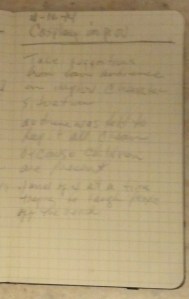 ople in each row. All the seats were filled and fans continued to file into the room. Standing fans leaned against the wall, covering every inch and blocking the entrance and exit ways.
ople in each row. All the seats were filled and fans continued to file into the room. Standing fans leaned against the wall, covering every inch and blocking the entrance and exit ways.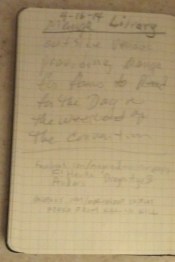
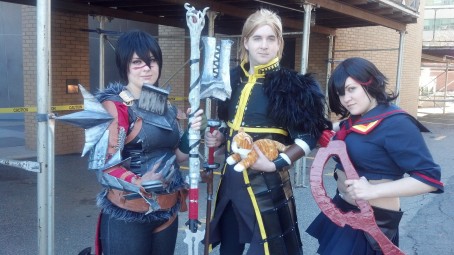

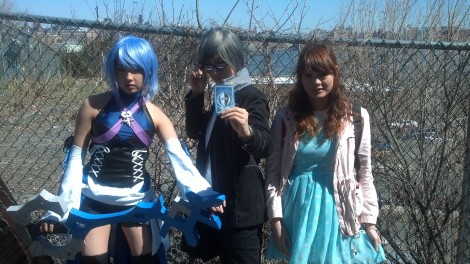

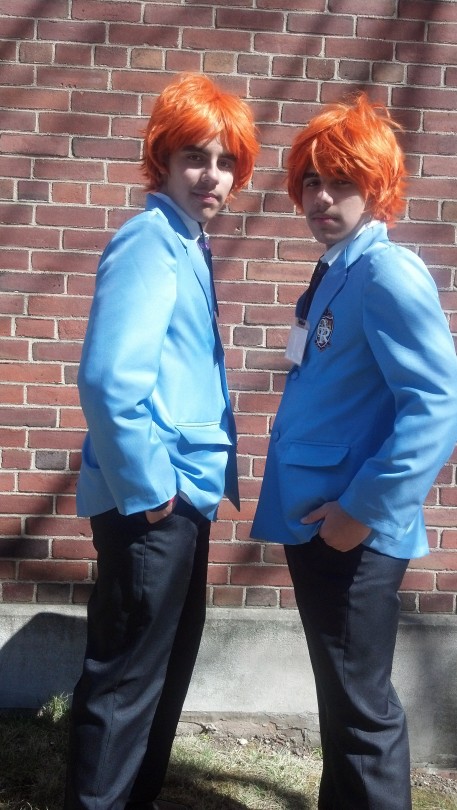
Recent Comments